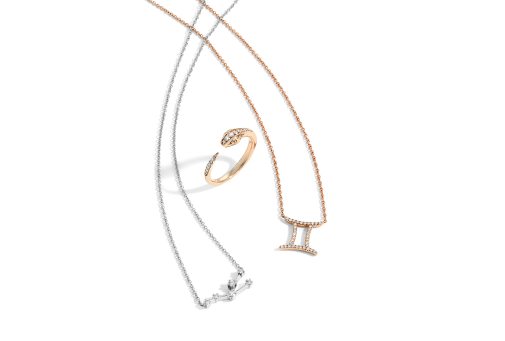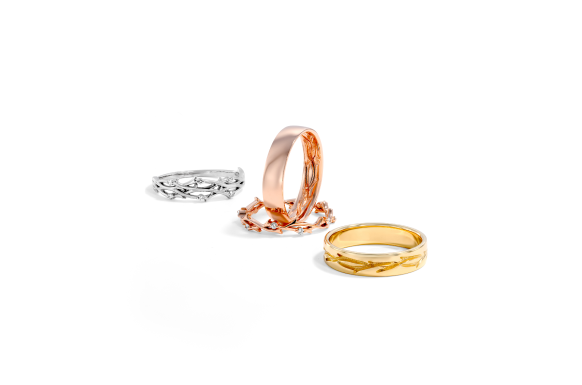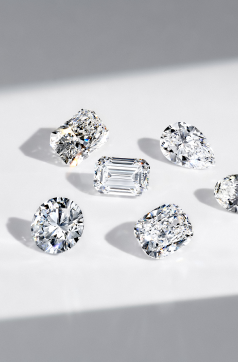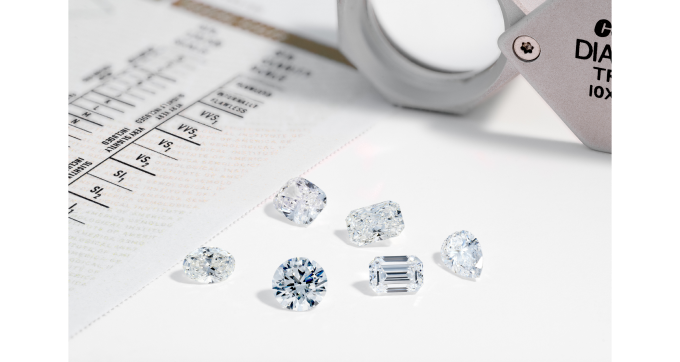When shopping for a diamond, the details matter. From carat weight to clarity, every factor plays a role in determining its beauty and value. But how can you be sure that the diamond you’re buying is accurately graded?
This is where GIA diamond certification is so important. As the most trusted name in diamond grading, GIA ensures that every certified stone meets strict quality standards, giving buyers confidence, transparency, and peace of mind.
If you're looking for a diamond that lives up to its brilliance both in beauty and authenticity, understanding GIA certification is essential. Whether you’re selecting an engagement ring or investing in fine jewelry, knowing what GIA stands for and how it impacts diamond grading will help you make an informed decision. Let’s explore why GIA certification is the gold standard in the diamond industry and how it benefits you as a buyer.
What is GIA?
The Gemological Institute of America (GIA) is a nonprofit organization dedicated to gem research, education, and diamond certification. Founded in 1931, GIA has set the global benchmark for accurate and unbiased diamond grading, ensuring that every stone is evaluated based on strict scientific standards rather than market trends or retailer preferences.
Before GIA, the diamond industry lacked a universal grading system, making it difficult for buyers to compare stones with confidence. In 1953, GIA introduced the 4Cs (Cut, Color, Clarity, and Carat weight) which became the worldwide standard for diamond evaluation. Today, GIA’s expertise is recognized by jewelers, collectors, and buyers worldwide, making it the most trusted and respected diamond grading authority.
At Keyzar, we believe that every diamond should come with trust and transparency. That’s why we only offer diamonds certified by GIA or IGI (International Gemological Institute), which are two of the most respected grading authorities in the industry. Whether you choose a natural or lab-grown diamond, you can shop with confidence knowing that your stone has been professionally graded by an unbiased, expert laboratory. When you buy from Keyzar, you're not just getting a beautiful diamond: you're getting one with proven quality and authenticity.
The Mission of GIA
GIA is committed to more than just grading natural and lab diamonds: it exists to protect consumers and uphold the integrity of the diamond industry. Through advanced research and education, GIA provides cutting-edge gemological studies that continually refine diamond evaluation techniques, ensuring accuracy and reliability in every report. Beyond research, GIA plays a key role in educating jewelers, gemologists, and industry professionals through specialized training programs that emphasize ethical practices and high standards.
One of GIA’s most important functions is consumer protection. Because it is a nonprofit institution, GIA does not buy, sell, or trade diamonds, which allows it to provide unbiased evaluations. This approach benefits both buyers and sellers: buyers receive diamonds that match their true quality, and sellers gain credibility by offering GIA-certified stones.
What is GIA Diamond Certification?
When a diamond is sent to GIA, it undergoes a thorough examination using advanced technology and a team of specialists. They assess the diamond based on the 4Cs and additional characteristics to determine its true quality and value. Unlike other certification labs that may inflate a diamond’s grade to increase its market price, GIA provides an unbiased, factual report that buyers can trust.
One of the biggest advantages of GIA certification is transparency. Since diamonds are a significant investment, knowing exactly what you’re paying for is essential. A GIA report ensures that you are not overpaying for an inaccurately graded diamond. Additionally, GIA-certified diamonds tend to hold their value better than uncertified stones, making them a smarter choice for those looking to make a lasting investment.
What’s Included in a GIA Diamond Report?
A GIA diamond report provides a complete breakdown of a diamond’s characteristics, starting with the 4Cs—Cut, Color, Clarity, and Carat weight. Cut is the most important factor in determining a round diamond’s brilliance: a well-cut diamond reflects light beautifully, enhancing its sparkle, while a poorly cut diamond will appear dull, regardless of its size. Color is another key characteristic, with all diamonds graded on a scale from D (completely colorless) to Z (noticeable yellow or brown hues). The less color a diamond has, the rarer and more valuable it is.
Clarity measures the presence of internal or external imperfections, called inclusions and blemishes. GIA grades clarity from Flawless (FL) to Included (I3), depending on how visible these imperfections are under magnification. Finally, carat weight determines the diamond’s size, with larger diamonds being rarer and typically more expensive.
In addition to the 4Cs, a GIA report also includes other important details, such as fluorescence, polish, and symmetry. Fluorescence refers to how a diamond reacts under UV light, which can affect its appearance in certain lighting conditions. Polish and symmetry describe the quality of the diamond’s surface finish and how precisely its facets are aligned, both of which contribute to its overall brilliance.
How to Read a GIA Diamond Certificate
A GIA diamond certificate provides all the critical information about a diamond’s quality, but understanding it requires knowing how to read its different sections. At the top of the certificate, you will find the GIA Report Number, a unique identifier that can be used to verify the diamond’s authenticity through GIA’s online Report Check tool. Below this, the report details the diamond’s 4Cs, listing the grades assigned to its cut, color, clarity, and carat weight.
The certificate also includes a proportions diagram, which visually represents the diamond’s shape and facet arrangement. This diagram is useful for understanding the diamond’s symmetry and overall craftsmanship. Additional grading factors, such as fluorescence, polish, and any inclusions or blemishes, are also noted on the report.
Before purchasing a diamond, always cross-check the GIA Report Number online to confirm that the diamond you’re buying matches its official grading report. This extra step ensures that you are getting exactly what you paid for.
Why GIA Certification Matters for Diamond Buyers
Many buyers wonder whether GIA certification makes a diamond more expensive. The truth is that GIA does not set diamond prices—it simply provides an accurate assessment of a stone’s quality. Because of this, GIA-certified diamonds often hold their value better than non-certified stones, as buyers can trust that the grading is accurate.
For example, if you buy The Kamellie solitaire engagement ring with a GIA-certified diamond, you have peace of mind knowing that the diamond’s quality has been fully evaluated. While other grading labs exist, their standards may not be as strict, leading to inconsistencies in grading accuracy. Choosing a GIA-certified diamond means you are investing in a stone with verified quality, ensuring that you are not overpaying for an inaccurately graded diamond.
Final Thoughts on GIA and Diamond Buying
A GIA-certified diamond is a guarantee of quality, transparency, and lasting value. Whether you’re shopping for an engagement ring or a timeless jewelry piece, choosing a GIA-graded diamond ensures you’re making an informed and confident investment.
When selecting a diamond, always ask for a GIA certificate to verify its authenticity and quality. A GIA report protects your purchase, ensuring that the diamond you choose meets the highest industry standards. If you’re ready to find a GIA-certified engagement ring that combines beauty, brilliance, and trust, shop Keyzar’s collection today and discover diamonds that shine with certified excellence.






